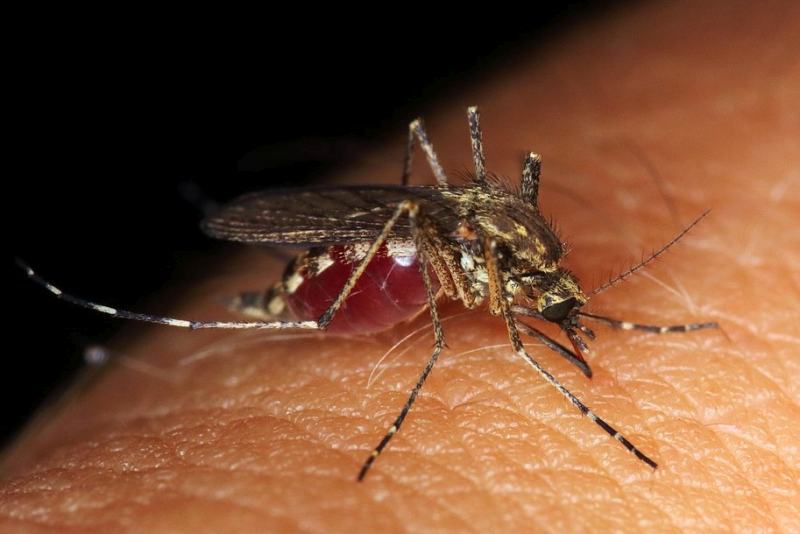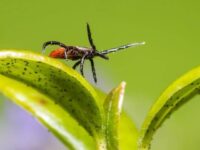This post contains affiliate links. If you click on a link and make a purchase I earn a commission at no extra cost for you.
DEET is a chemical insect repellent. It is very effective against various blood-sucking insects such as mosquitoes, mites, fleas, bedbugs, black flies and ticks. It is estimated that more than 200 million people use repellents containing DEET each year. Based on studies examining the long-term use of DEET by millions of consumers, no significant and lasting negative health effects have been observed in humans.
What is DEET In Bug Spray?
DEET is short for Diethyltoluamid or N,N-diethyl-meta-toluamide, a chemical substance that is the active ingredient in many insect repellents. It is used to repel pests such as mosquitoes, ticks, fleas, and biting flies. It was developed by Samuel Gertler for the protection of US army soldiers in insect-invaded areas. It came into civilian use in 1957.
DEET is actually a natural product. It was found in female Pink Bollworm Moths, scientific name Pectinophora gossypiella, a nocturnal moth species, that was native to Asia.
What Is Deet Made Of?
Dietyltoluamide – DEET, is a clear, slightly yellowish liquid with a mild odor that can be mixed with alcohol, it does not dissolve in water easily. It is manufactured industrially by allowing different organic acids to react with amines. The chemical formula is C12H17NO, which means that it is a chemical compound of carbon, hydrogen, nitrogen, and oxygen.
DEET AS AN Insect Repellent
As mentioned above, Diethyltoluamid is the active ingredient in insect repellents /bug sprays. DEET containing products are available in a variety of lotions, liquids, and sprays. Preparations can be applied directly to the skin to repel insects.
Mode of action
There are different views about the mode of action of DEET.
- It is believed that it works by blocking insect olfactory receptors for a volatile substance that is present in human sweat and breath. It effectively “blinds” or “confuses” the insect’s senses.
- When applied correctly, insects are not able to find a person because they cannot detect/ smell their prey.
- Recent studies suggest that DEET is an acetylcholinesterase inhibitor. This activity may cause neurotoxicity and create a risk to humans.
- DEET is expected to induce neuroexcitation and toxicity in insects.
- When applied accurately, Diethyltoluamid forms a vapor barrier at the surface of the skin that discourages mosquitoes from landing on the skin. A study in 2019 indicated that neurons on the tarsi of mosquitoes respond to DEET. As a result, mosquitoes are repelled upon contact. It specifies that DEET functions as a contact repellent.
Duration of protection
The duration of protection depends on concentration, application dose, and the environment. If the temperature is high or the humidity is high, the effectiveness decreases. Sweating also reduces effectiveness.
Protection against mosquitoes maybe around 6 hours to a maximum of 12 hours, depending on the concentration. The repelling effect against ticks not as long and maybe around 2-4 hours depending on the type of tick
The Centers for Disease Control and Prevention recommended that 30–50% DEET be used to stop the spread of pathogens carried by insects.
DEET is safe for children
Insect repellents containing DEET have been approved for use on kids. DEET- containing insect repellents can be used for children from up to two months and older. Products with lower concentrations should be preferred for use on children. It is safe for children but there are some guidelines to follow:
- Repellents containing DEET should be used only once per day.
- Do not allow children under the age of ten to apply repellent themselves.
- Do not apply to broken or sunburned skin.
- Wash your hands with soap after applying repellents.
DEET is safe for pregnant women
In many countries that are facing the Zika virus and yellow fever disease, doctors advise pregnant women to use insect repellents containing DEET. Experts argue, whether DEET containing repellents are harmful or not during pregnancy. The World Health Organization (WHO) recommends DEET as the active ingredient of choice for protection against tropical diseases such as malaria, yellow fever or dengue fever. Follow the instructions written on the package, there may be no harmful effects. Different studies show that only a small amount of DEET can enter the fetus’s bloodstream from the mother, but the babies show normal growth with no abnormalities. Experts also suggested that pregnant women should use repellents with low concentrations of under 30%. If in doubt or if you are in an area where there is no risk of contracting a dangerous disease from insects then avoid insect repellents. In any case, you have to weigh the risk-benefit of whether you need and insect repellent.
Side effects of DEET
Insect repellents that contain DEET are not dangerous if label guidance is followed and the product is used carefully. In limited instances, some people have experienced unwanted side effects such as skin rashes, blisters, and skin irritation, possibly by applying too much repellent and being exposed to very high doses. Observed side effects are rare and are in no relation to the harm caused by parasite-borne diseases.
Advantages of DEET
The most significant benefit of DEET is its capability to repel potentially disease-carrying insects including ticks, mosquitoes, fleas, and biting flies. Lyme disease (transmitted by deer ticks), La Crosse encephalitis virus (transmitted by mosquitoes) and West Nile virus are caused by these insects. These diseases can cause severe health issues or even death in the case of encephalitis.
The Centers for Disease Control and Prevention (CDC) suggest the use of insect repellents when out-of-doors. Studies indicate that it repels ticks for about 2-10 hours and mosquitoes from 2-12 hours which depends on the concentration of DEET in the product.
Disadvantages of DEET
DEET irritates eyes and mucous membranes. Don’t apply near the eyes and mouth. Do not apply on broken skin or on sunburns.
In some cases, the substance can cause skin irritation and allergic reactions like redness, rash, and swelling. In rare cases, the substance can also cause and epileptic seizures. The excessive reactions may be caused by exposure to the eyes, broken skin, by inhalation, and ingestion.
Ingestion can lead to seizures. It was also reported that children under 16 years of age suffered from brain damage and seizures after ingesting DEET and extensive application of repellents.
The substance is very toxic to aquatic organisms, don’t use near water or if you intend to go into the water for a swim.
Remains in the air as a mist or vapor when sprayed. It must be broken down by the atmosphere. The time it takes to break down is controlled by temperature, humidity, and wind.
Directions for use
There are some points that should be kept in mind while using insect repellents containing DEET.
Read and follow all the precautions on the product label. It should not be applied to irritated skin, cuts or wounds.
- Apply directly to exposed skin.
- Avoid inhalation
- Not be applied near eyes and mouth.
- Should not be sprayed in enclosed rooms.
- Sprays are best used outdoors only.
- Do not over-apply.
- Wash hands after application.
Conclusion:
N,N-diethyl-meta-toluamide is a man-made chemical substance that is used as an active ingredient in many insect repellents. The World Health Organization recommends it for protection against tropical diseases such as malaria, zika, yellow fever or dengue fever. It is safe to use and can be directly applied to the skin. It effectively repels pests such as mosquitoes and ticks, but it does not kill them. It irritates the olfactory organ of bloodsucking insects and makes the wearer invisible to the insect. It is safe for children and pregnant women, though precautions should be followed.
Sources and more to read:



